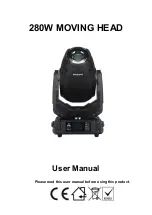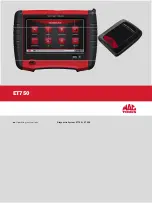
Continue filling until the water level covers
the tongue. At this point, take a small soft
brush and gently scrub the inside of the
mouth. (A small toothbrush works well for
this.) Cotton swabs can be used to scrub
inside the nostrils. When done, pull the
plug from the esophagus and drain into
the sink. Now pick the head up to a verti-
cal position and pull the plug from the tra-
chea to completely empty the system.
(See
figure 9.)
Rinsing the Airway:
To rinse the airway, follow the same proce-
dure using clean, warm tap water. Repeat
this process until all the soap has been
flushed from the system.
Disinfecting the Airway:
To disinfect, repeat the standard cleaning
procedure, but this time use a bleach solu-
tion, as specified by the Centers for Disease
Control, instead of soapy water. Fill the
system with the solution until it reaches the
corners of the mouth. Remember to start
filling with the head flat and finish with the
neck slightly elevated to ensure that the
solution completely fills all airway passages.
Once completely filled with the bleach
solution, allow the head to sit for at least
10 minutes. Drain as described earlier and
repeat the rinsing process to flush out all
of the bleach solution. Set the head aside
and allow it to dry completely.
Using the Combitube
®
:
Thoroughly read and follow the instruc-
tions that come with the Combitube
®
.
The trainer will accept either a full size or
a small adult tube. As with a live patient,
it may be necessary to back the tube out
slightly if ventilation cannot be estab-
lished.
Note:
Depending on tube placement,
the large cuff may not accept the rec-
ommended amount of air. In this case,
simply inflate the cuff to its maximum
volume (when the plunger stops), detach
the syringe from the blue pilot balloon,
and proceed.
Supplies/Replacement Parts for
Airway Management Trainer
Head:
LF03285U
Replacement Lungs
LF03644U
Nasco Pump Spray
Lubricant
W09919U
REN Cleaner
Figure 8
5
Figure 9
Tongue Swelling
Pull back the plunger of a 20 cc syringe
and attach it to the yellow stopcock.
(See
figure 4.)
. Depress the plunger to force
approximately 10 cc of air into the system.
Close the tubing port at the stopcock to
maintain the pressure. The syringe may
be removed at this point.
Caution: Do not overinflate! Excessive
pressure may rupture the system. Stop
inflation when resistance is felt or the larynx
is observed to close. Always release the
pressure when finished training by opening
the tubing port at the stopcock.
Cleaning & Maintenance
To clean the Airway Management
Trainer head you will need to remove the
head from the manikin. To do this, first
remove the chest skin and then the chest
plate exposing the lungs.
(See figure
5.)
Feed the lungs through the hole in
the upper compression plate and then lift
off the plate. Disconnect the lungs from
the bronchi by pulling the red caps from
the white connectors.
(See figure 6.)
Now that the head has been disconnect-
ed from the airway, rotate it 180° so that
it is facing backwards. The large tab on
the front of the neck should be aligned
with the keyway in the torso. Tilt the head
upward until it snaps free.
(See figure
7.)
Disengage the smaller rear tabs from
the neck opening and pull the head from
the body. Reverse the above steps to reat-
tach the head.
Figure 4
Figure 5
Figure 6
4
Figure 7
Once the head is off the body, place a
cap plug (supplied) on each end branch
of the bronchi (the esophagus already has
one in place).
(See figure 8.)
You are
now ready to begin the cleaning process.
Take the trainer to an area with a sink and
open counter space. Stabilize the head
on the counter face-up (towels work well
for this) with the plugged tubes hanging
over the sink. Carefully pour warm soapy
water (a mild dish soap works best) into
the mouth until the water level reaches
halfway up the tongue. Now tilt the head
back and bring the neck up 3" off the
countertop.
NP 154-06 LF03960.indd 6
3/26/08 11:05:58 AM




























